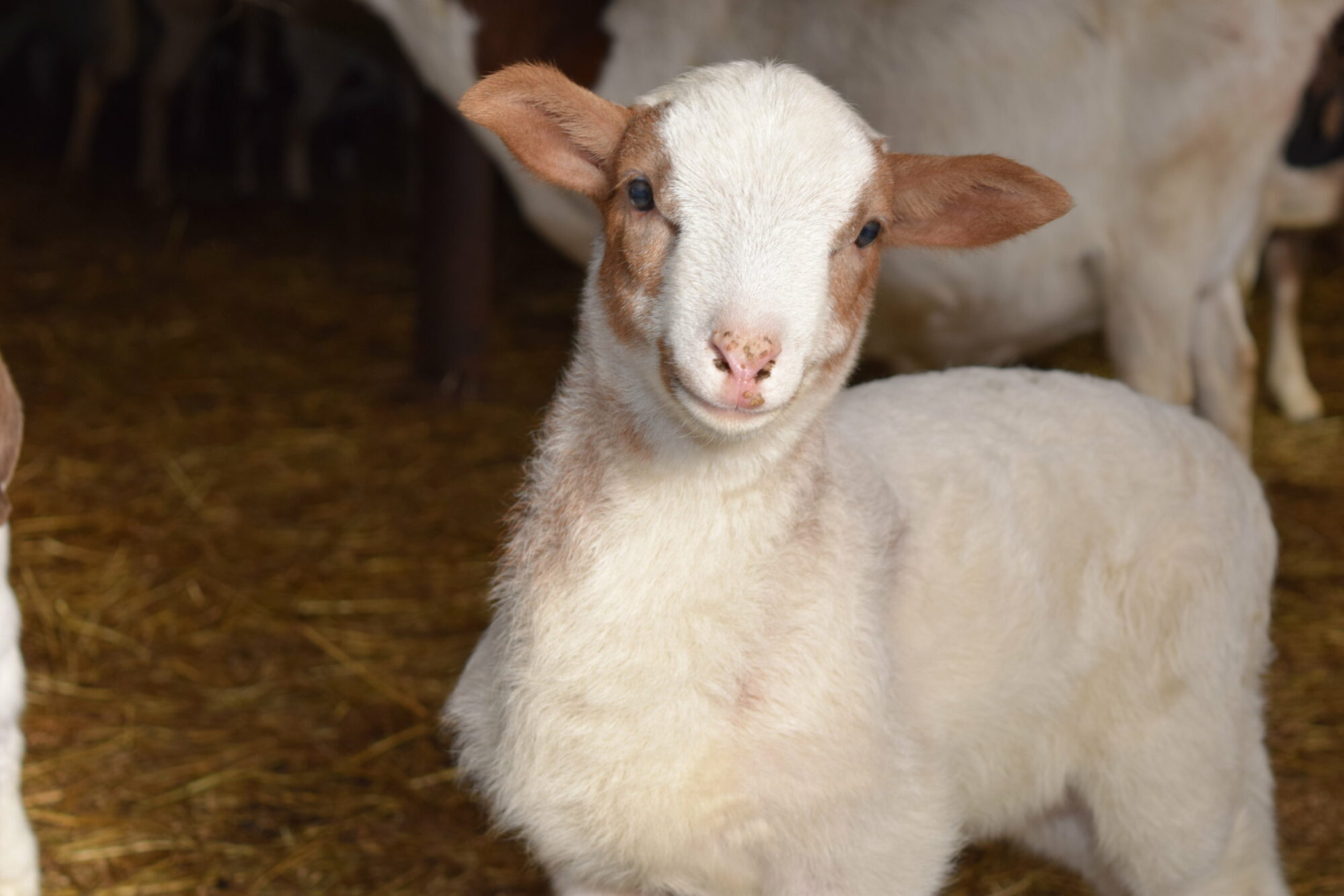It is again “that time” of the year! Newborn lambs and goats are once more filling up our barn. Little ones are arriving every few hours or so; sometimes several moms are all giving birth at once. It is at times both stressful and chaotic, but the babies are so incredibly adorable it is hard not to be completely smitten by them. In my opinion, it is the most wonderful time of the year!
My job is fairly simple: Be there. Check on the moms. Assist when needed. Gently move babies and moms to a safe place so they can bond. Watch for problems. Feed and water moms. Keep notes. Tag ears. Repeat. And then pause to enjoy the sight of little ones leaping and frolicking, of moms cuddled in sleep with their babies. Maybe even pat myself on the back for a job well-done!
But my job wasn’t always so simple. Our first few years of kidding/lambing bordered on traumatic—not knowing when to intervene, how to ensure an appropriately balanced diet, how to identify the types of behaviors and body language that signal looming problems in both mothers and babies. This all lead to me feeling terribly discouraged those first few seasons.
For new goat and sheep owners, kidding and lambing time is the first true test of their mettle. Of course if they have lots of health problems and losses, it will limit their ability to be profitable. But few realize that this time can be physically, mentally and emotionally challenging… and bad experiences can irreversibly dishearten new farmers. Indeed, the success of those first few seasons often determines whether new farmers survive at all.
Starting out, I was no different than most new goat farmers. I had read lots of books and had assembled a “kit” of supplies those books suggested I might need: iodine, old towels, rags, disinfectant, thermometer, rubber gloves, sterile lubricant, penicillin, propylene glycol, colostrum, baby bottles and nipples, electrolytes, stomach tube, syringes, needles, castration bands, etc., etc., etc.! Having all these things on hand gave me a slight feeling of false confidence. But since I really wasn’t sure how (or when) to use half of them, having the kit around scared me more than anything! It was a constant reminder of how truly unprepared I was.
Then, in 2007, I had the extreme fortune to be included in a mentoring program sponsored by Cornell Cooperative Extension and partially funded by the Northeast SARE (Sustainable Agriculture Research & Education) Program. I was paired with Doug Bowne of Little Falls, a goat farmer who—at the time—had over 20 years of experience. We spent a few afternoons together, talking about herd management, tending to his animals, deliberating the setup of his barn. We even discussed those scary things I had included in my “kit”—and what to do with them if needed. As I headed into my own kidding season, we spent a little time chatting over the phone to ease my nerves.
As I look back on the whole experience, I realize the most valuable thing I got was confidence. I could hear Doug’s words of advice as I stood back and watched moms progress through the stages of labor. (It is amazing how the words “this is normal” can be so comforting!) I knew what a belly full of milk should feel like, what an arched back and shivering could mean. I was confident that the scary things weren’t the norm, but rather things I should be aware of and be able to address quickly should they arise.
And when it was time for me to pull a baby that was breach, I was physically prepared with my kit of goodies. But what got me through mentally were those talks with Doug: Gently reach in with your fingers slightly cupped, feel around and identify what exactly it is that you are feeling. Is it a front foot or a back? A nose or a tail? Is there one baby or are there two? Don’t be afraid to gently push the baby back if it is too far along the birth canal to be safely repositioned. Envision what you are feeling and work with the mother’s contractions. Being calm and confident is helpful for the mother and definitely will contribute to a better outcome. I pulled two babies that day, neither of which would have entered this world without my help…and Doug’s.
Of course, over the years I have learned even more about what can happen during kidding season. I’ve learned when I’ve exhausted my comfort zone and when it is time to call our very knowledgeable veterinarian. I’ve also learned, unfortunately, when nothing can be done.
More recently, I find myself chatting with folks that are thinking about getting a few goats or sheep. Just like me, they’ve been seduced by those adorable babies and are equally smitten. I shake my head and I laugh, and then I tell them kidding and lambing season is the most wonderful time of the year…eventually!
